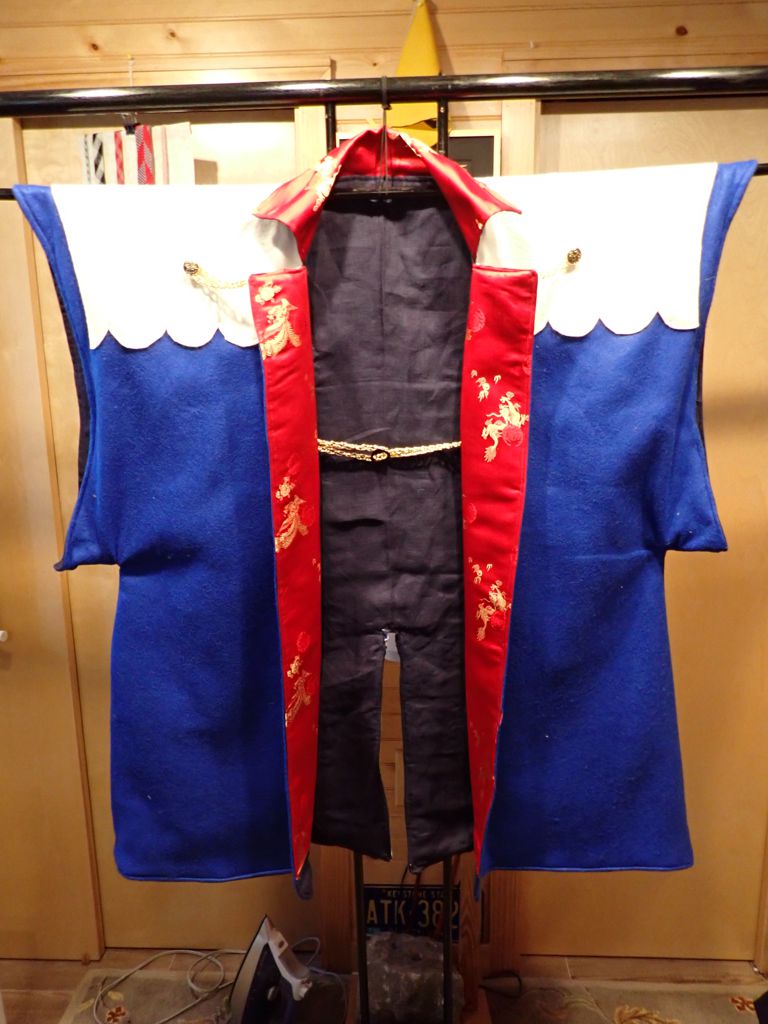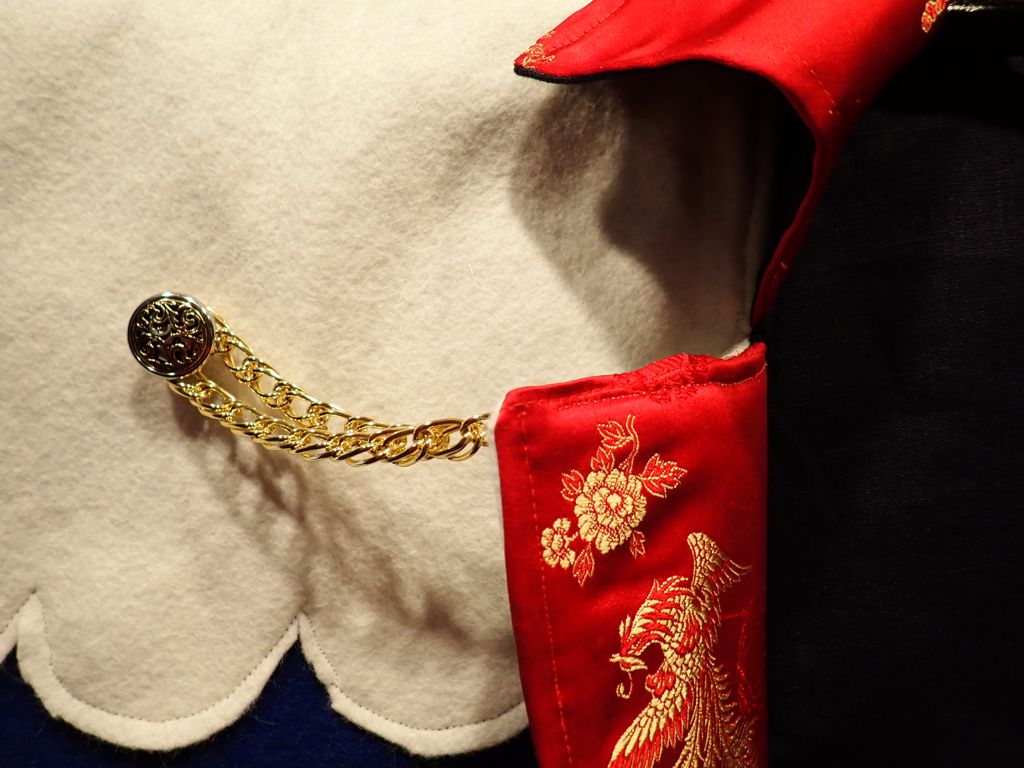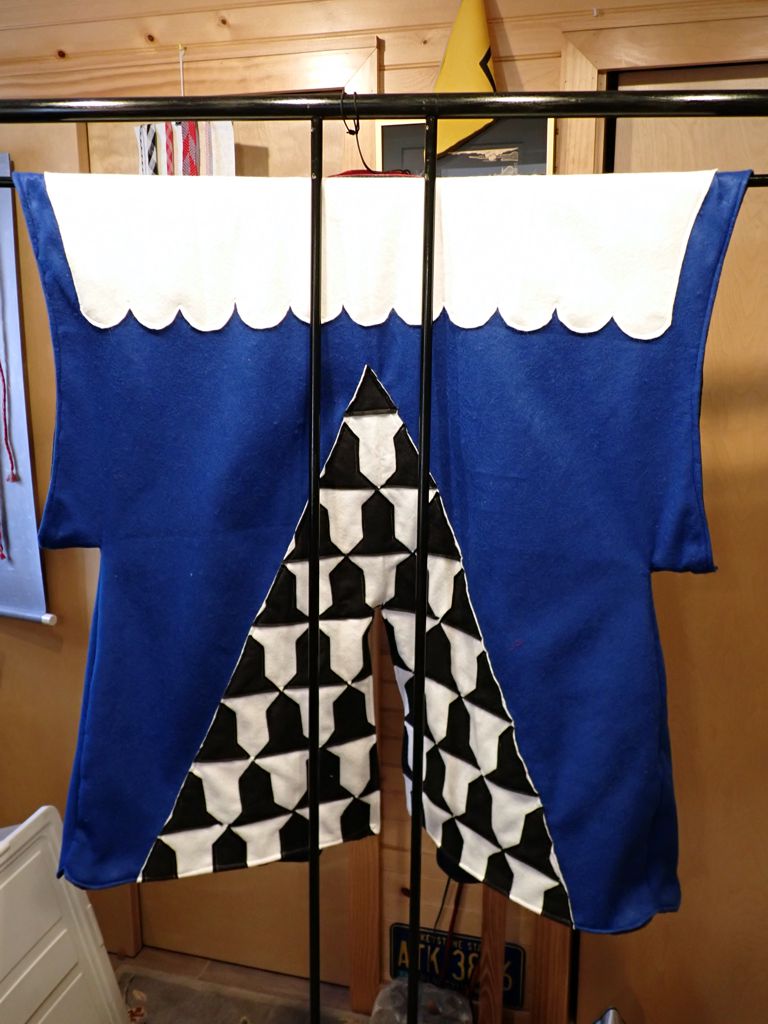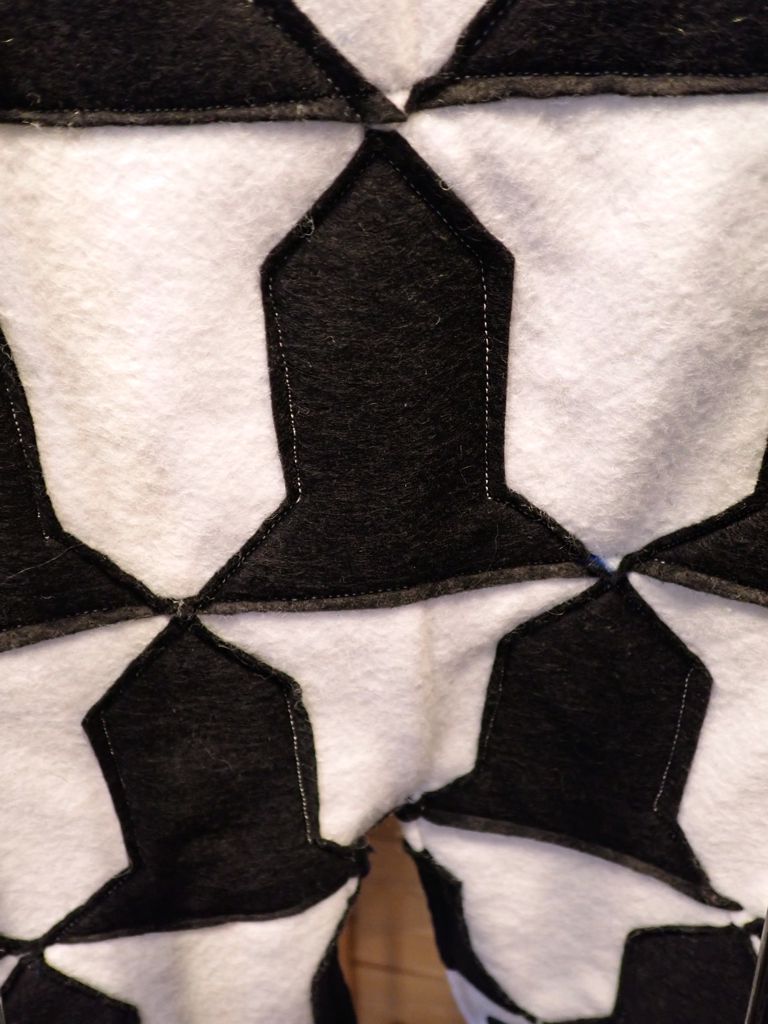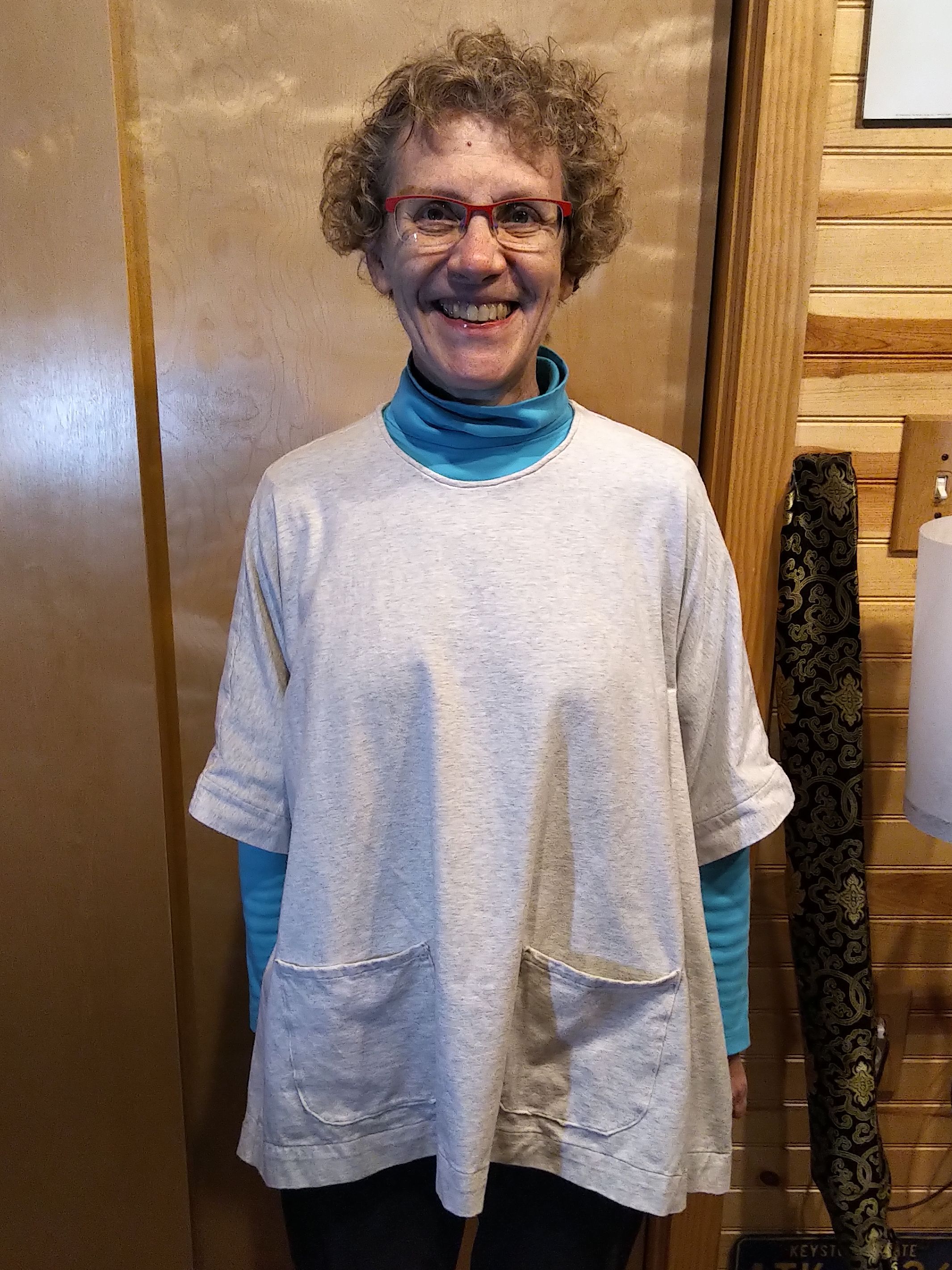Our good friend, and the head of our household, Sir Maghnus an Chnoic na n’Iora is this year celebrating the 35th anniversary of his knighting at Pennsic. A military leader in medieval Japan with this level of seniority would have a jinbaori “camp coat” to wear over his armor so that he would be more visible and identifiable. I have been “planning” for some time to make one for him eventually, and this anniversary year really kicked my planning into execution.
The main body of the jinbaori is royal blue felt lined in navy blue linen. The collar lining is some “dragon and phoenix” silk brocade from the stash of Mistress Achren, who passed away some time ago. The “clouds” in chief are white felt. The whole thing is rather large, about 40 inches wide, because it is meant to be worn on top of armor.
The chest closure and “hold open” loops are some decorative chain, gold chain being one of the symbols of a Knight in the SCA. The buttons are actually extra buttons I purchased as spares for a very early piece of garb of mine. Since I never needed the replacements, they were available for this project.
Here’s the view from the back, showing more felt embellishment. The “clouds” at the top are of a piece with the front. The “hill of squirrels” motif at the bottom is more felt, this time using black felt pieces on the white to create the vair pattern. This is his heraldic arms, and such display of heraldry is common on jinbaori.
Attaching all those pieces of black felt was something of a pain, but I was able to sew continuously along the zig-zag edges of the pieces to reduce the labor significantly. While materials like felt don’t seem very Japanese, the “rules” of Japanese clothing seem to go largely out the window with jinbaori. These were intended to be showy and look as expensive and impressive as possible.
The completed project is quite large, heavy, overly warm, and probably somewhat fragile. I doubt it can ever be cleaned, so it probably won’t see very much wear. It should make a great display piece, and will really make him look quite impressive if he ever gets a chance to wear it in court.
I’m actually very happy with the way this came out. I was mostly just winging it when it came to construction, so I’m glad it came together at all.

